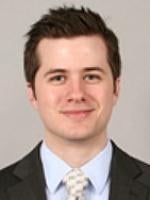Intellectual Property group members Kevin Cukierski and Bill Lenz authored an article for the Software Development Times entitled "Patent Court Further Muddies the Software Patent Waters" on August 8, 2013.
In an eagerly awaited decision that many expected would clarify to what extent (if at all) software is eligible for patent protection in the United States, the Court of Appeals for the Federal Circuit in May only succeeded in fueling the already heated debate over software patent eligibility. Rather than adopting a single, definitive test for determining whether software is patent eligible – which the main reason the Federal Circuit heard the case in the first place – the judges instead formulated at least three different, incompatible standards for determining whether software is eligible for patent protection or is a patent ineligible “abstract idea.” Although not one of these standards was agreed upon by a majority of the judges, the Federal Circuit did succeed in clarifying at least one thing: the future of software patents remains uncertain.
The patents at issue in CLS Bank Int’l v. Alice Corp. were directed to a computerized trading platform used for conducting financial transactions in which a third party settles obligations between a first and a second party so as to eliminate settlement risk – effectively, a two-sided escrow arrangement. As is typical for software patents, the claims of these patents – which define the scope of patent protection – were directed to systems (e.g., computer systems configured to execute software to provide the computerized trading platform); methods (e.g., methods of operating computer systems to execute software to provide the computerized trading platform); and computer-readable media (e.g., a CD or DVD storing software that, when executed by a computer system, causes the computer system to provide the computerized trading platform).
The test for patent subject matter eligibility as recited in the patent laws is deceptively simple: “Whoever invents or discovers any new and useful process, machine, manufacture, or composition of matter, or any new and useful improvement thereof, may obtain a patent therefor.”
Over the years, however, the courts have complicated the analysis through its interpretation of this rule. Most notable with respect to software subject matter eligibility is the abstract idea exception, which holds that an abstract idea or principle – such as a mathematical formula or idea – disembodied from or absent a practical or concrete application, is not eligible subject matter for patent protection because it would not fall under one of the four subject matter categories recited in the rule. The debate over software patent eligibility for the most part hinges on whether software falls prey to this abstract idea exception. If so, software is not patent eligible, and if not, software is patent eligible.
While other recent cases have grappled with these complications, the prevailing struggles seem to have come to a head in CLS case. The judges sharply disagreed on the proper test for determining whether an invention (and, specifically, software) falls within the abstract idea exception. The judges also sharply disagreed on the ultimate conclusion: whether the claims of the patents at issue were directed to abstract ideas and thus ineligible for patent protection. But there were some common threads. A majority of the judges found that the method claims and computer-readable medium claims were directed to abstract ideas and not eligible for patent protection (the judges were split, however, on the patent eligibility of the system claims). A majority of the judges also found that corresponding system, method, and computer-readable media claims should rise or fall together. In other words, the claim format is of no consequence; if a patent includes system, method, and computer-readable medium claims directed to the same invention, these judges believe that either all of the claims are patent eligible or none of the claims are patent eligible. But since a majority of the judges did not agree on the reason that the method and memory device claims are not patent eligible and the reason that the claims should rise or fall together, these trends are simply informative and are not binding.
The judges who believed that at least some of the claims were eligible for patent protection were swayed in part by the fact that the patents include a comprehensive disclosure of the computer systems on which the software was operated and how the various components of the computer systems (e.g., processor, memory device, and display device) work together to execute the software. These judges also pointed to the numerous detailed flowcharts included in the patents that describe the sequence of operation of the software on the computer systems.
So what does CLS mean? The inability of the Federal Circuit to agree on a standard for determining whether software is eligible for patent protection means that the software patent debate is far from over. Both sides of the software patent debate can claim some form of victory. The combination of the divided nature of this decision, the arguably incompatible precedent regarding software patent eligibility, and the potential impact on the patent system makes it likely that the Supreme Court will hear the case to (hopefully) provide clarity to courts, patent owners, and inventors.
Like it or not, certain software is still eligible for patent protection, and it may be wise to take advantage. Proponents of software patents should continue to apply for patent protection on inventions incorporating software. During this period of uncertainty, when preparing a patent application directed to an invention incorporating software, applicants should consider including a detailed discussion of the computer hardware components used to execute the software, including how the components work together to do so, as well as a variety of flowcharts describing the sequence of operation of the software. Given the Federal Circuit’s apparent preference for system claims, applicants should also consider at least including (if not focusing on) system claims that include the hardware components and how they interact to perform the software functions.
For those who oppose software patents, stay tuned for Supreme Court activity; the debate is far from over.




 />i
/>i
